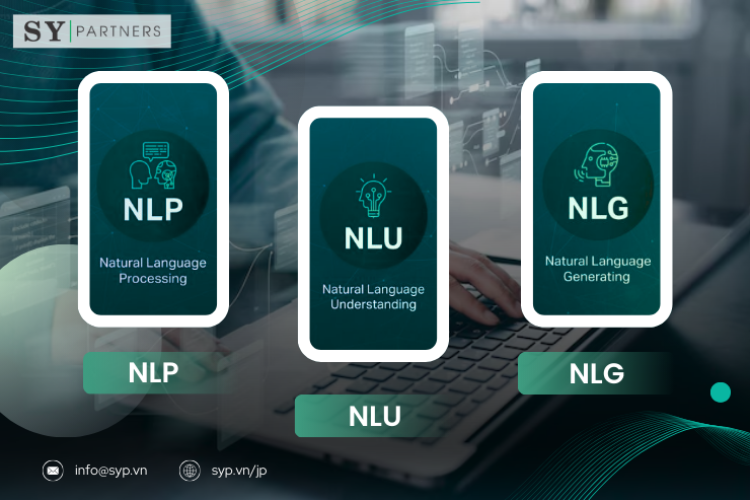What is No-Code Development? Features, Pros & Cons, and Use Cases Explained
As the pace of business change accelerates, organizations and individuals face two major challenges: a shortage of IT talent and the need for faster development cycles. Traditional full-scratch development offers high flexibility but demands specialized expertise, significant time, and substantial costs—making it difficult for non-engineers to participate.
This barrier has fueled growing attention toward no-code development, an approach that allows applications and websites to be built without writing any programming code. Instead, users rely on graphical interfaces, drag-and-drop tools, and prebuilt templates.
By lowering the technical threshold, no-code enables business professionals and even individual entrepreneurs to actively engage in digital solution building, dramatically expanding both the speed and scope of digital transformation.
In this article, we will break down the key features, advantages and disadvantages, common use cases, and practical considerations of no-code development, while also comparing it with low-code approaches.
1. What is No-Code Development?
No-code development is an approach that enables the creation of applications and websites without writing any programming code. Instead, it relies on graphical interfaces, drag-and-drop tools, and prebuilt templates. Because coding is not required, even non-engineers and business staff can build apps relatively easily.
This approach is particularly valuable for startups that prioritize speed, SMEs with limited resources, and individual entrepreneurs without IT expertise. No-code provides an environment where “anyone can build,” fostering the democratization of development and enabling autonomous digitalization without relying solely on IT departments.
2. Key Features of No-Code Development
The biggest strength of no-code lies in its simplicity, but that advantage also comes with inherent limitations. The following table highlights its key characteristics:
| Feature | Description |
|---|---|
| No Coding Required | Applications can be built entirely without programming languages |
| Ease of Use | Drag-and-drop editors and templates allow intuitive development |
| Speed | Apps and websites can be launched within hours or days |
| Accessibility | Usable by non-engineers with little technical expertise |
| Flexibility | Rich standard features, but limited for highly customized functions |
| Extensibility | External integrations and advanced customization are restricted |
| Operations | Maintenance and updates are handled automatically by the provider |
| Cost | Low initial cost, ideal for small-scale projects, though fees may rise as usage grows |
| Security & Governance | Basic security provided, but harder to meet strict compliance or unique requirements |
| Platform Dependency | Strong reliance on the vendor; migration or switching providers can be risky |
Taken together, no-code is best positioned for simple, short-term, and small-scale projects, where speed and accessibility are more important than deep customization.
3. Advantages and Disadvantages of No-Code Development
No-code development offers many benefits, but it also comes with limitations. Understanding both sides is key to making the right adoption decision.
| Item | Advantages | Disadvantages |
|---|---|---|
| Development Speed | Possible to release within a few days | Cannot handle complex specifications |
| Cost | Low initial investment, easy to start even for individuals | Costs may increase once expansion is needed |
| Usability | Enables non-engineers to develop | Cannot support advanced business requirements |
| Operation & Maintenance | Automatic updates handled by the service provider | Complete dependence on the platform |
| Flexibility | Access to rich templates and plugins | Adding highly customized functions is nearly impossible |
| Scalability | Sufficient for small-scale operations | Unsuitable for medium to large-scale projects |
| Security | Vendor’s standard security measures are available | Hard to meet industry-specific or custom regulatory requirements |
| Extensibility & Integration | Easy integration with other cloud services | Advanced integration with external systems is limited |
4. Use Cases of No-Code Development
| Use Case | Example | Effect |
|---|---|---|
| Small-scale E-commerce | Restaurants, personal shops | Can be launched quickly at low cost |
| Startups | MVP, idea validation | Early market entry and hypothesis testing |
| Business Improvement | Inquiry management, simple databases | Built by teams without relying on IT departments |
| Short-term Use | Event landing pages, campaign sites | Easy setup and removal, highly cost-efficient |
4.1 Small-scale E-commerce Sites and Service Sites
For small and simple websites such as restaurant websites, personal portfolios, or online shops, no-code is an ideal choice. Features like design, booking systems, and simple payment options can be quickly added using templates, enabling fast and low-cost deployment.
4.2 Startup Validation Stage
When launching a new service to the market in a short timeframe, no-code is highly effective for MVP (Minimum Viable Product) development and idea testing. Without relying on large development resources, prototypes can be published in just a few days, allowing for faster improvement cycles.
4.3 Simple Digitalization of Business Operations
Internal forms, task management tools, or lightweight databases can be built directly by on-site staff using no-code platforms. This reduces reliance on IT departments and enables rapid implementation, leading to greater efficiency in daily operations.
4.4 Campaign Sites and Short-term Projects
For special websites such as those for exhibitions, events, or one-off landing pages, no-code offers great convenience. Pages can be created and published quickly, and after the event, they can be easily removed or reused, making them cost-efficient for short-term projects.
Related articles:
No-Code Development: 10 Industry Use Cases That Prove Its Power in Business Innovation
5. Differences Between No-Code and Low-Code
Although no-code and low-code are similar, they differ in scale and flexibility.
| Aspect | No-Code Development | Low-Code Development |
|---|---|---|
| Coding Requirements | None. Fully visual, drag-and-drop based development | Minimal coding required to implement advanced features |
| Target Scope | Small-scale, simple apps and short-term websites | Medium to large-scale business apps, systems designed for long-term use |
| Flexibility | Highly limited, difficult to add unique/custom features | High level of customization, adaptable to unique business requirements |
| User Base | Non-engineers, marketers, freelancers, small business owners | IT departments, engineers, mixed teams including business units |
| Development Speed | Fastest. Can be published within hours to a few days | Still fast, but may take longer depending on requirements |
| Scalability | Limited, not suited for large-scale expansion | Relatively scalable, supports enterprise-level deployment |
| Cost Structure | Low initial cost, ideal for individuals and small businesses | Platform fees + additional development costs required |
| Operation & Maintenance | Dependent on service provider, automatic updates | Flexible maintenance through in-house teams or vendor support |
| Best Suited For | Short-term projects, MVP testing, small-scale e-commerce | Digital transformation, long-term use, business efficiency, in-house development |
6. Challenges and Solutions in Adoption
No-code development is easy to get started with, but in practice it faces several challenges:
- Platform dependency: Once tied to a specific service, migration becomes difficult.
- Security issues: Risk of entrusting sensitive data to external platforms.
- Feature limitations: Cannot go beyond the standard functionalities provided.
- Lack of governance: If different departments build apps independently, overall management becomes unfeasible.
7. Key Points for Selecting No-Code Development
When adopting no-code, it is essential to clarify why it will be used.
- Purpose-driven: Is it for short-term use or long-term operation?
- Cost structure: Even if free at first, check future costs when scaling.
- Feature requirements: Are templates sufficient, or is custom development needed?
- Integration: Can it connect with other systems?
- Governance: Should IT take partial control instead of leaving everything to individual teams?
8. Conclusion
No-code development enables the "democratization of development," allowing even non-engineers to quickly build apps or websites. It is highly effective for small-scale e-commerce, startup validation, and short-term projects.
However, it has limitations when it comes to complex systems or long-term operations. Therefore, no-code is not a universal solution; the key to success lies in leveraging it for short-term or small-scale use cases while combining it with low-code or scratch development when necessary.


 EN
EN JP
JP KR
KR




